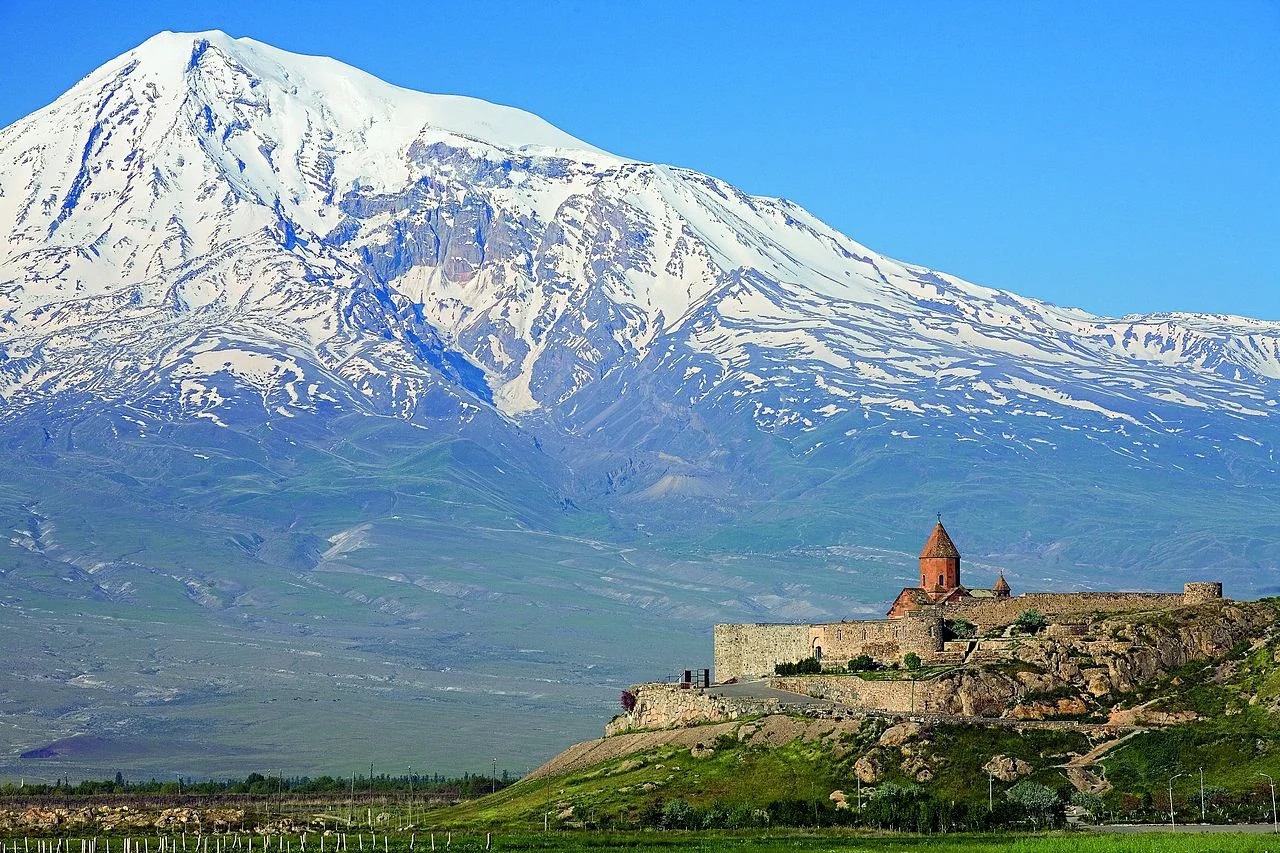Ararat Region
Монастырь Хор Вирап. Фото: wikipedia.org
The city of Artashat, the administrative center of Ararat region, has been the capital of Armenia for almost five centuries. This territory was populated even during the period of Urartu kingdom. King Artashes founded the city in the II century BC. In honor of the king, it received his name. Artashes built the city at the intersection of trade routes, thereby making it the center of trade.
Today Artashat is one of the largest agricultural regions of the country. The city is surrounded by vineyards and fruit gardens.
At the foot of the Biblical Mount Ararat, one of the main shrines of the Armenian Apostolic Church - Khor Virap monastery (in translation from the Armenian – «deep pit») is located. The monastery was built over an underground dungeon, where, according to the legend, Grigor Lusavorich (Gregory the Illuminator), was imprisoned by king Trdat III’s order for refusing to renounce Christianity. Gregory the Illuminator spent 13 years in the dungeon. Meanwhile Trdat fell into insanity, but Grigor healed him. He repented as a token of gratitude. In 301, Christianity was proclaimed the state religion of Armenia. Today, on a steep staircase, one can descend into a low prison, where the Baptist of Armenia was imprisoned.
In 642, a chapel was erected above the dungeon, which was destroyed. In the XVII century in its place, a new one was built.
To the north of Artashat in the beginning of IV century, king Khosrov Kotak laid the new city of Dvin, the capital of Armenia until the IX century. The city became a major trade and crafts center, since it produced fabrics, carpets, dishes, porcelain. In 1236, the Mongols finally destroyed it.
Systematic excavations of the Dvin have been carried out since 1937 and have given significant materials, characterizing the culture of Armenia in the V-XIII centuries. The ruins of the palaces of the rulers of Armenia, built after the earthquake of 893 (under them ruins of the palace constructions of the IV-IX centuries are found), houses of officials and pottery workshops of the X-XIII centuries are discovered in the fortress. In the center of the city the remains of a cathedral, rebuilt in the VII century from a basilica pagan temple of the III century, the Catholicos palace (V century), the basilica church (VI century), the building of a large caravanserai (VI century) and many others have been discovered. Many objects of everyday life and art, created by the masters of the Dvin, are now kept in the Hermitage in St. Petersburg.
In region of Ararat, in the southern part of the Gegham mountains range, the Khosrov Reserve extends, the oak forests of which were planted by king Khosrov Kotak. Protected by the state, nature reserve has rich flora and fauna. Here 1686 species of plants grow, 146 of which are listed in the Red Book.





